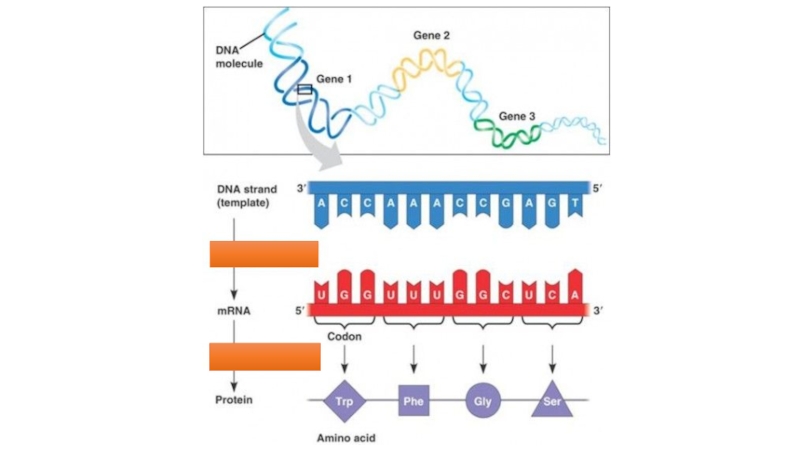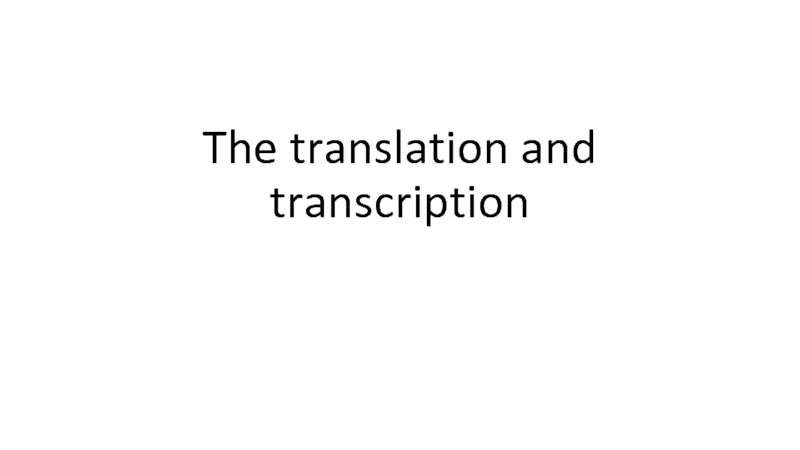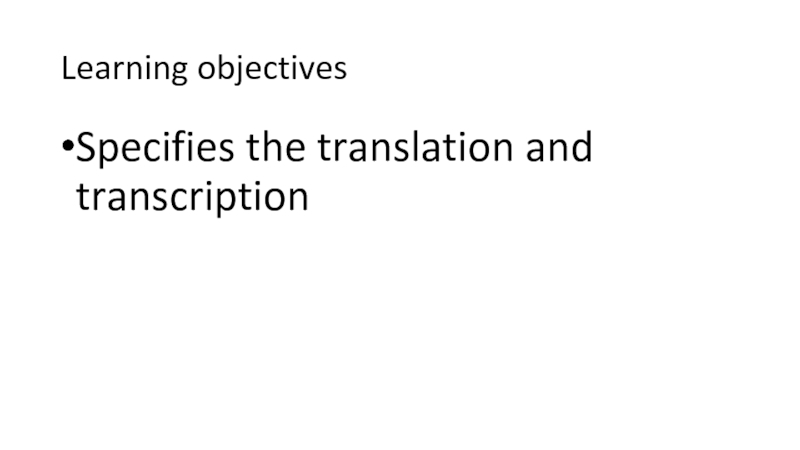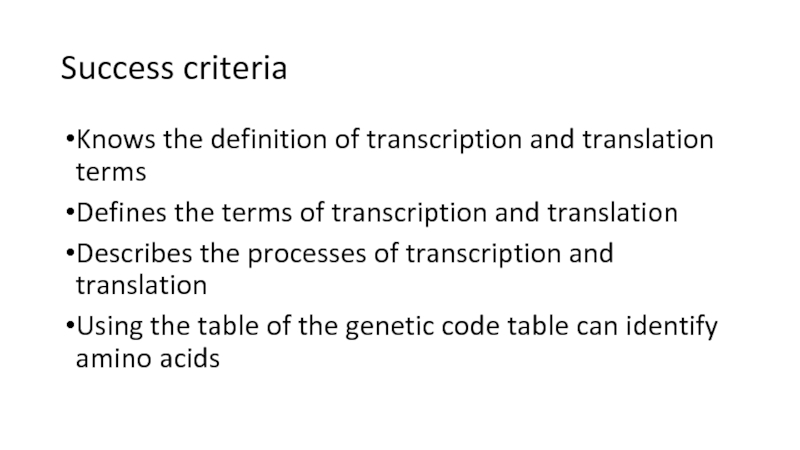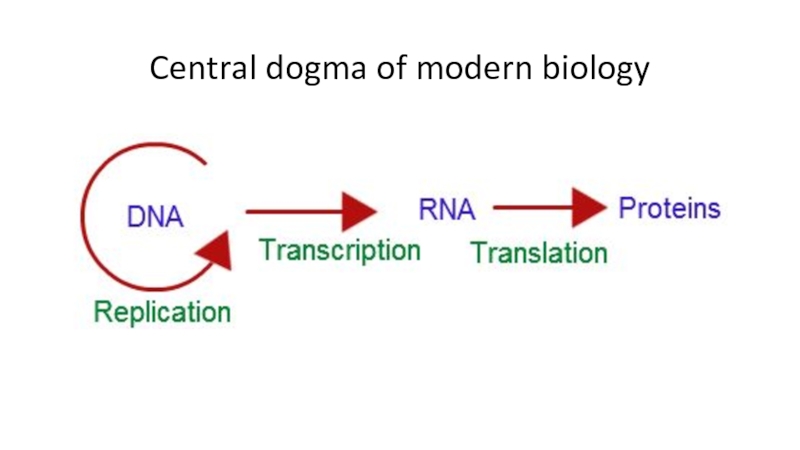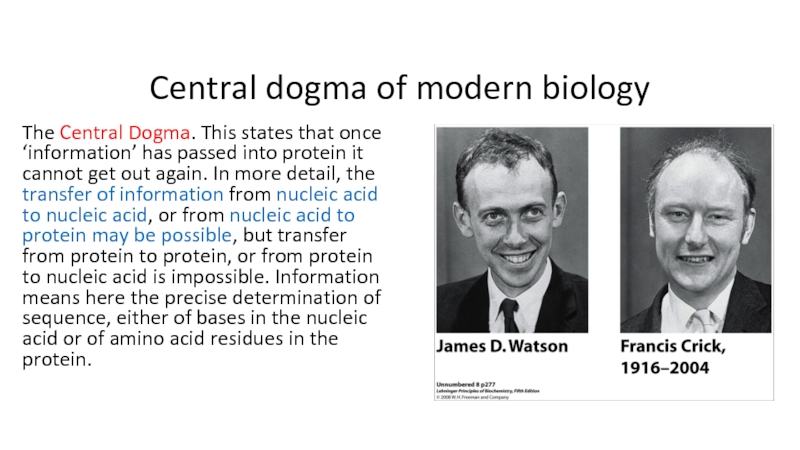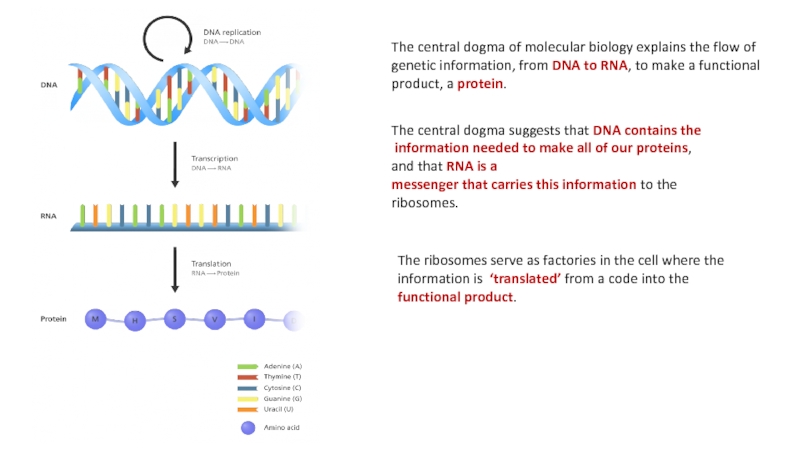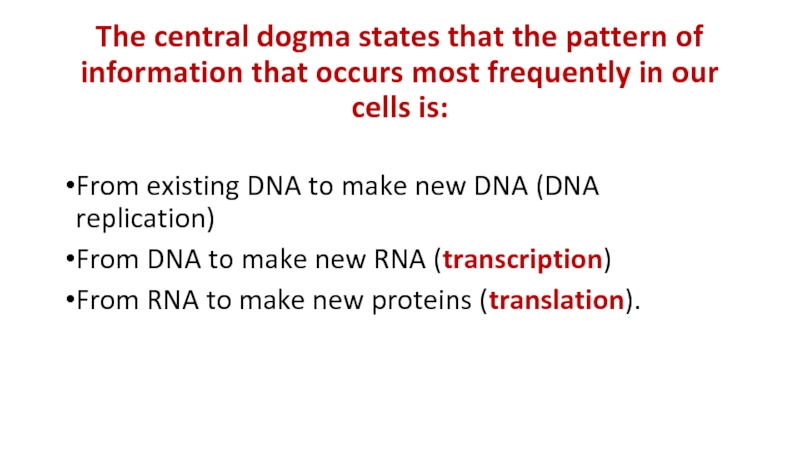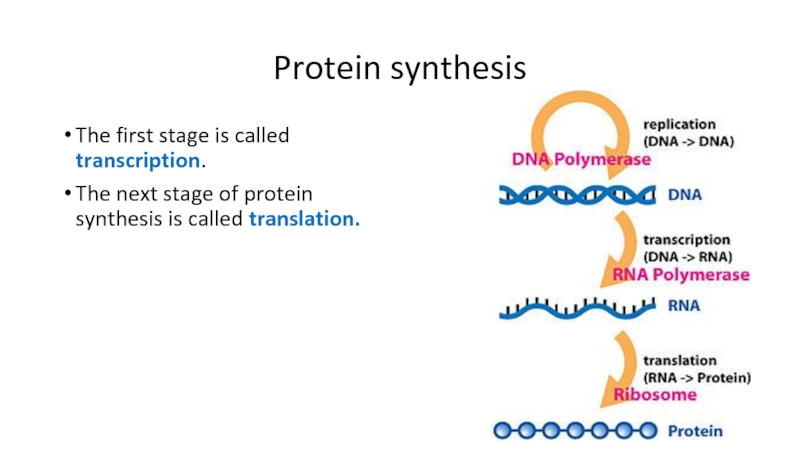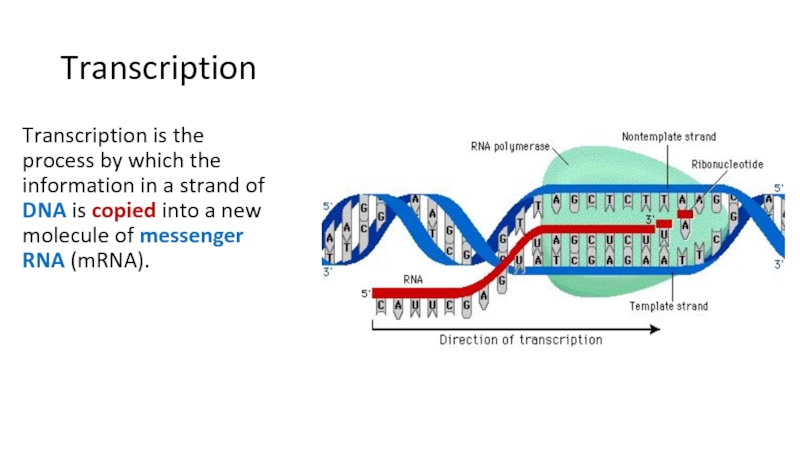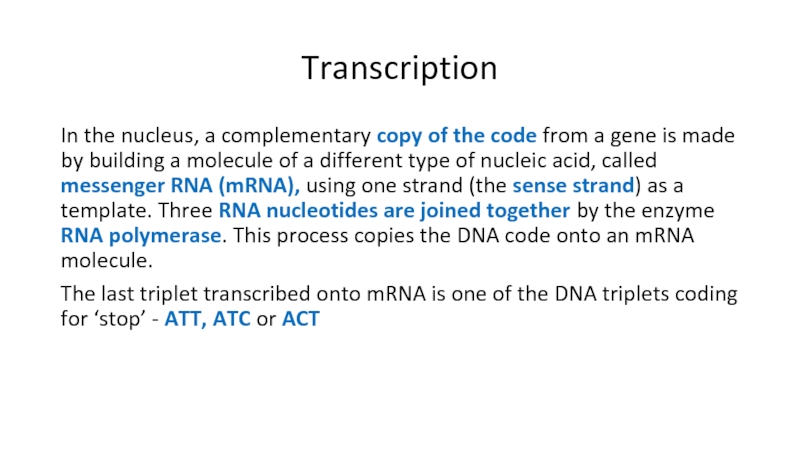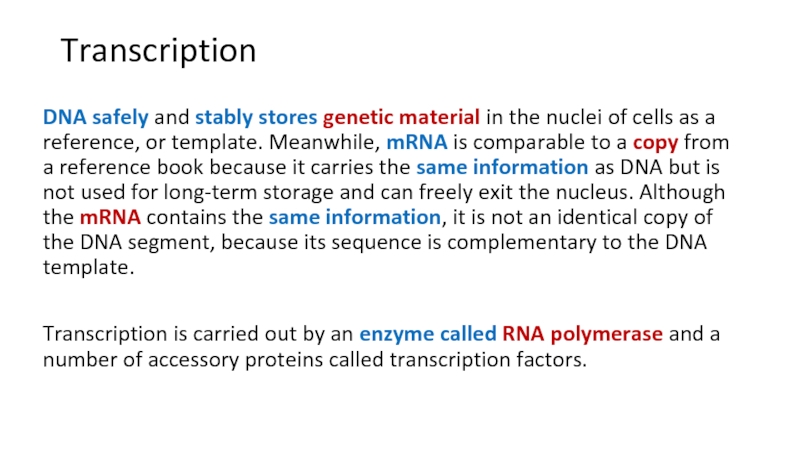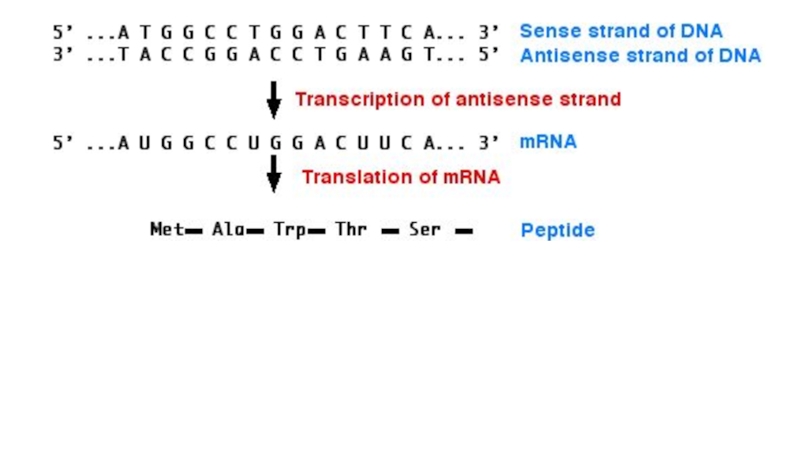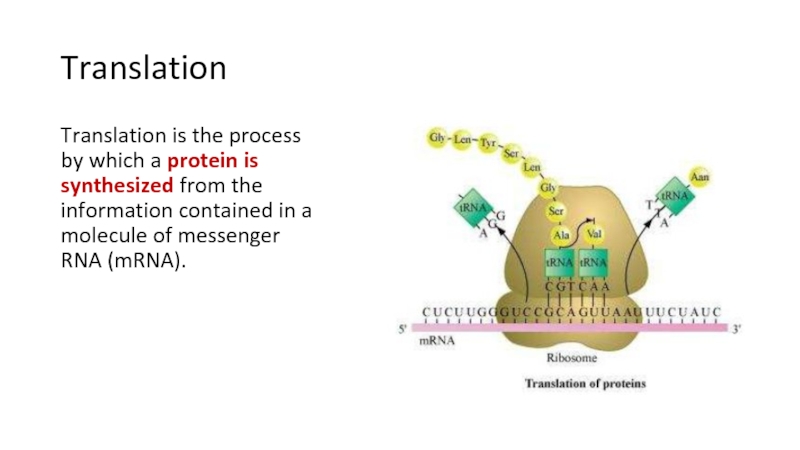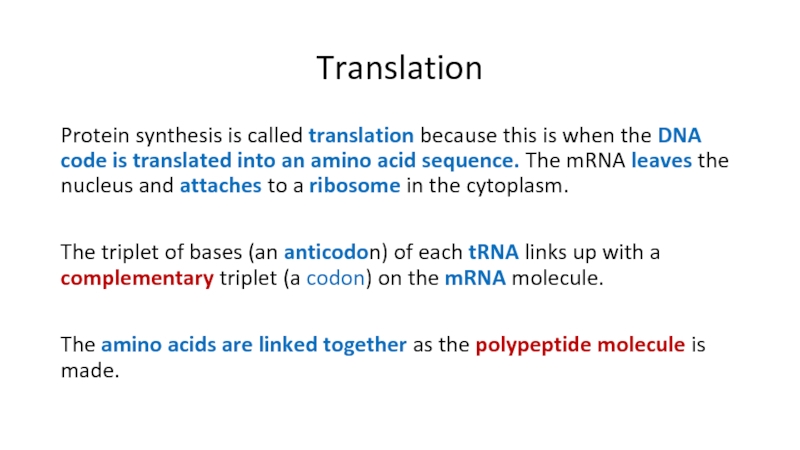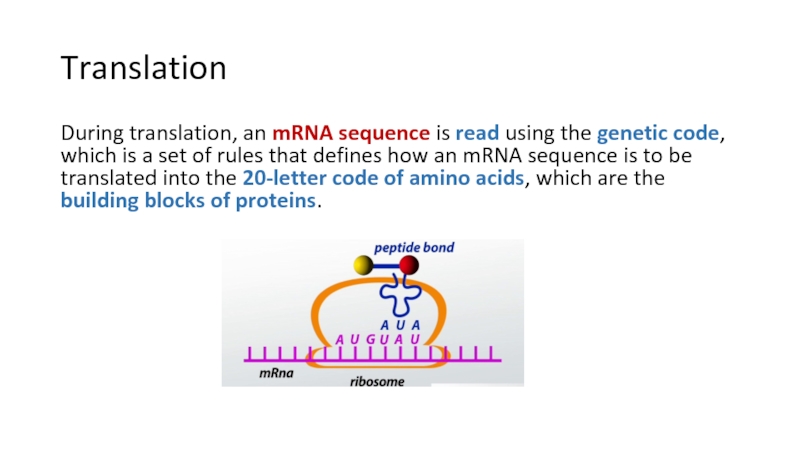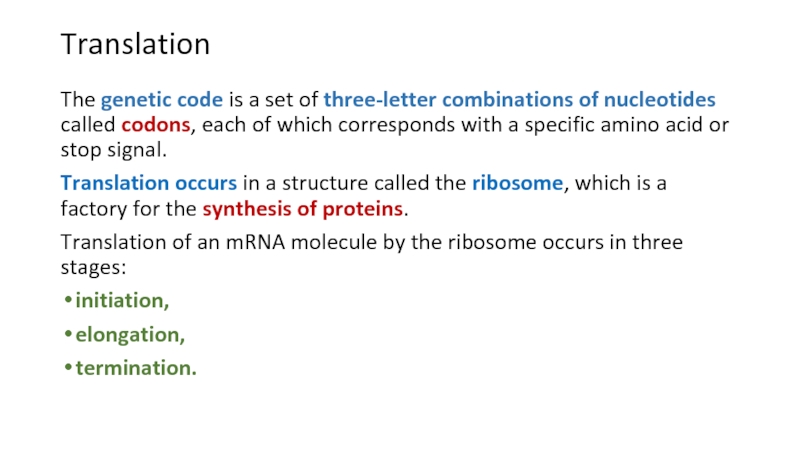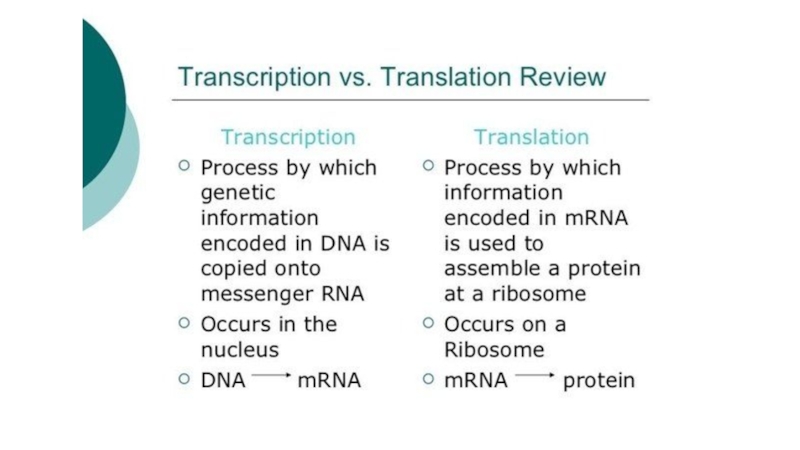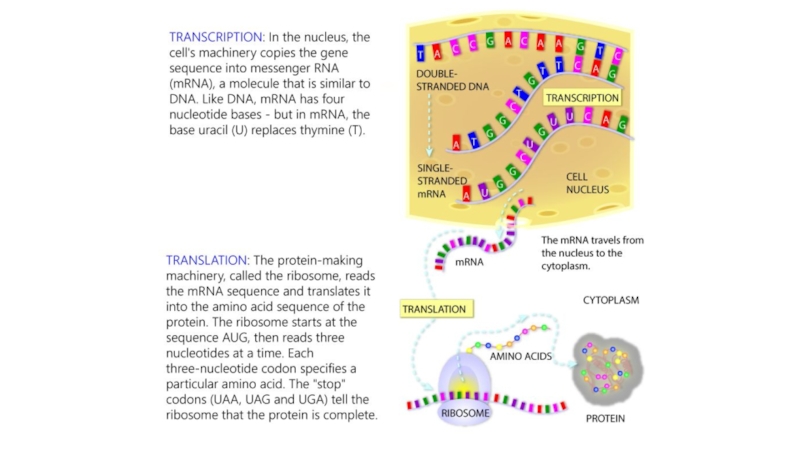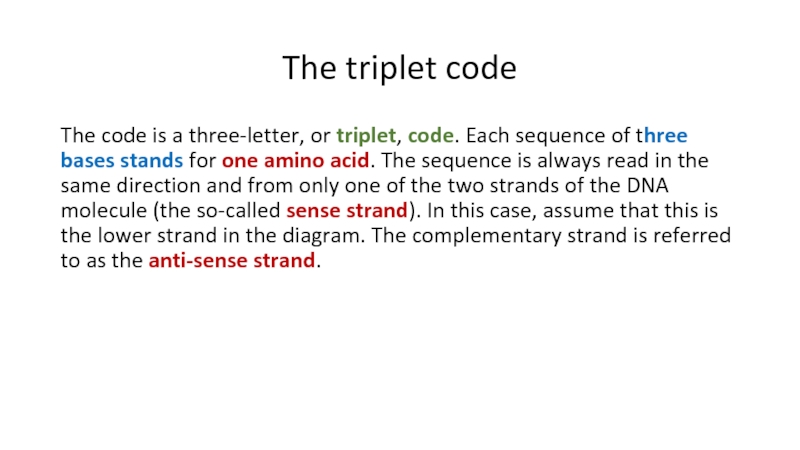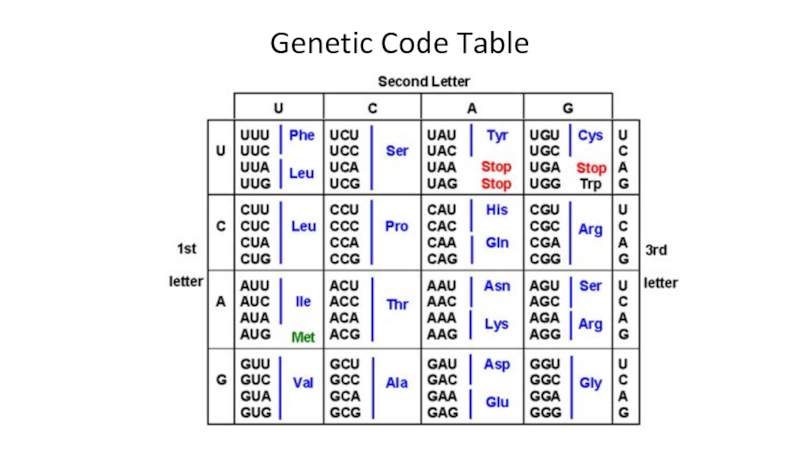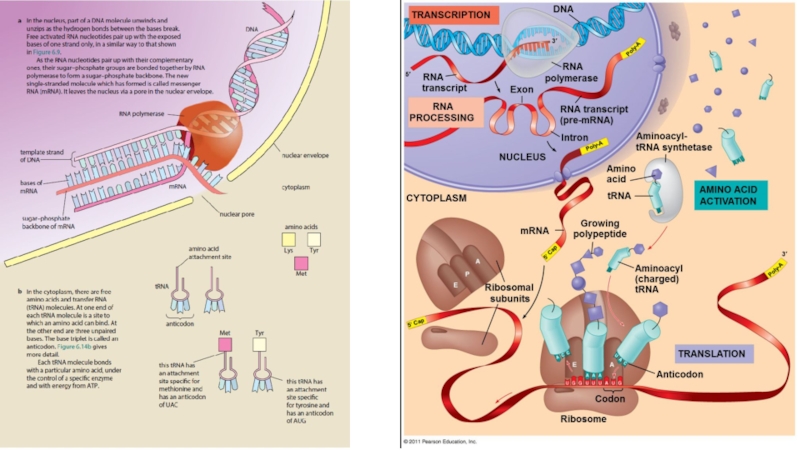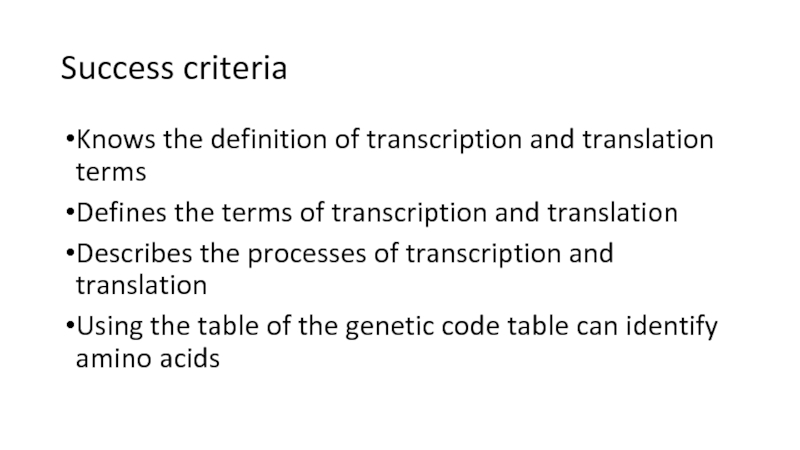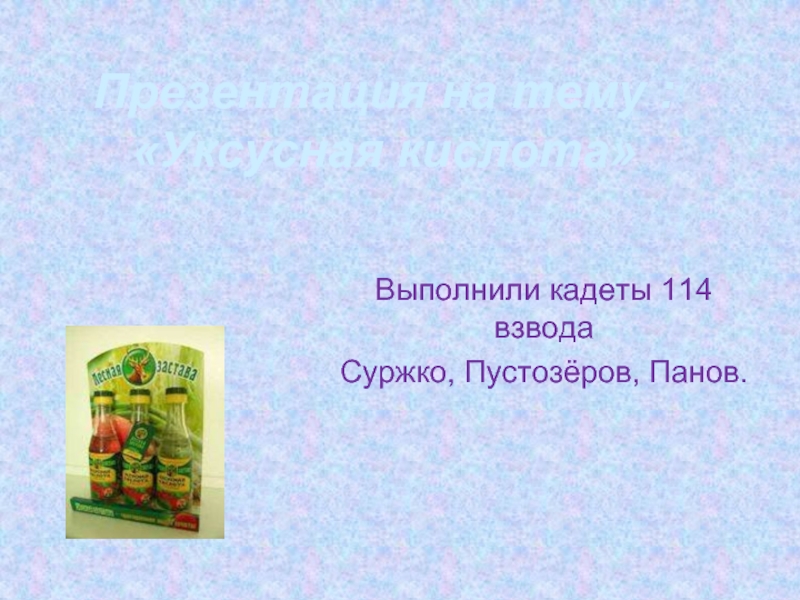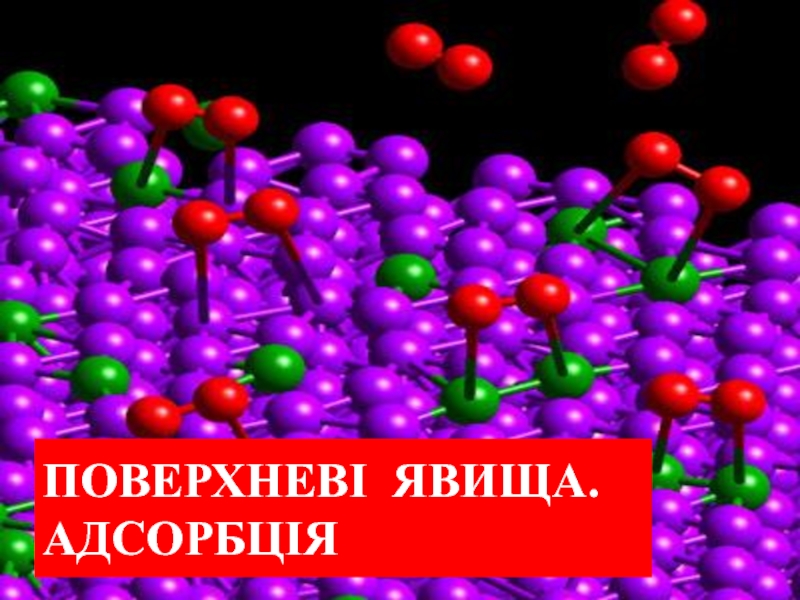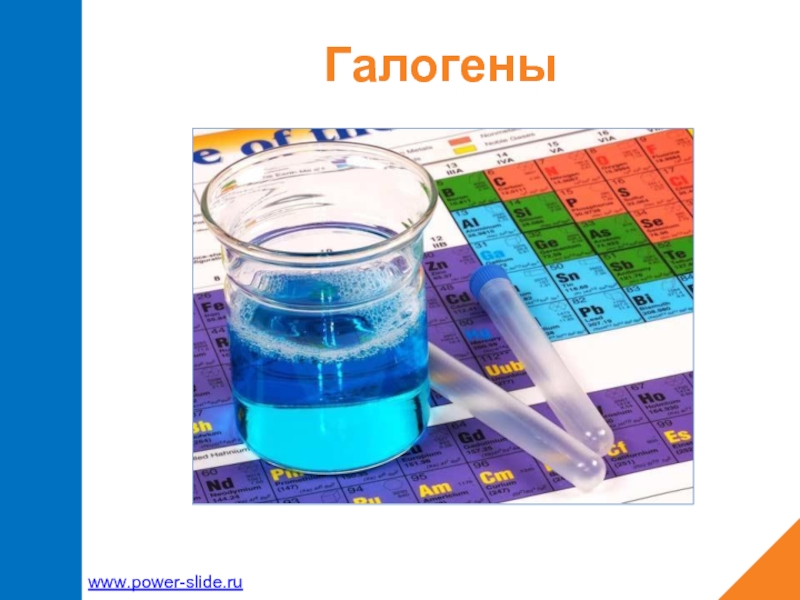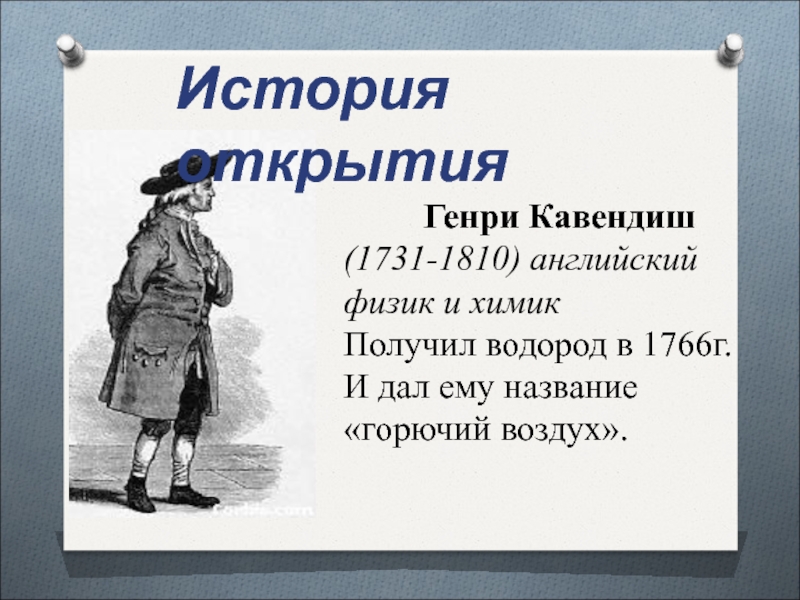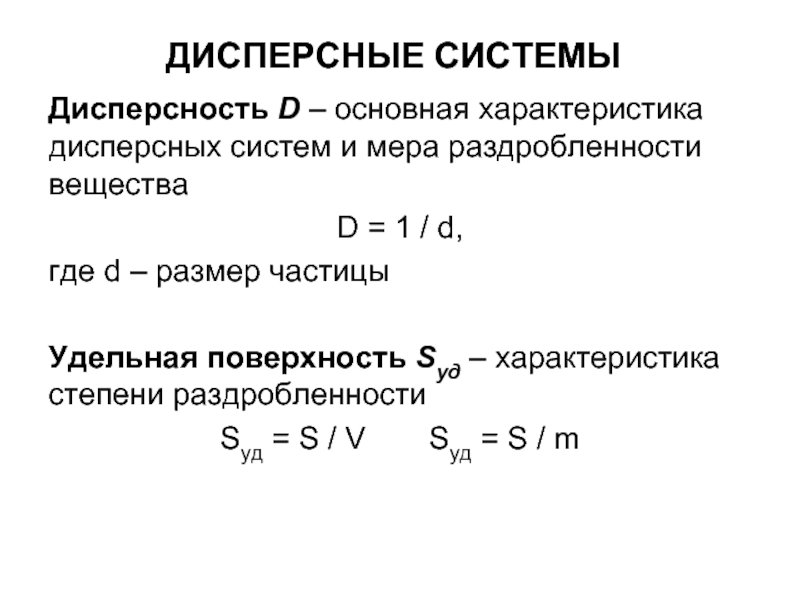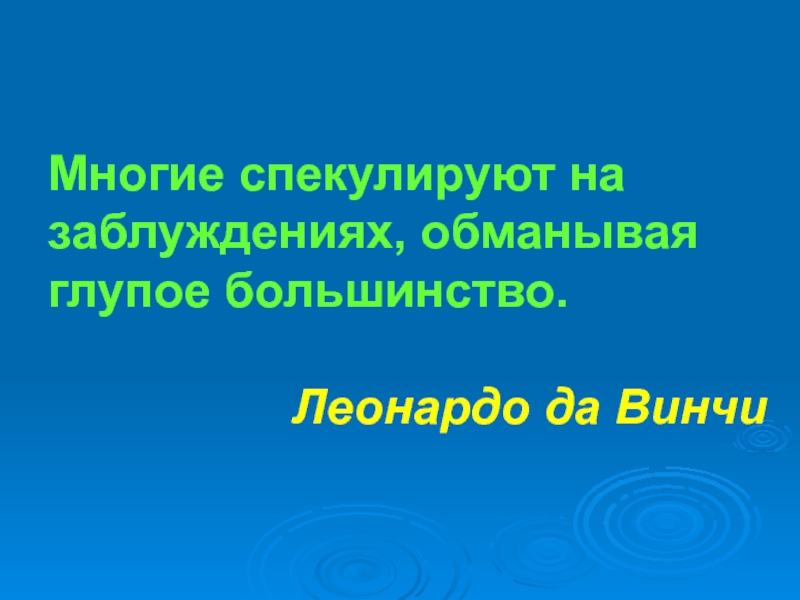- Главная
- Разное
- Дизайн
- Бизнес и предпринимательство
- Аналитика
- Образование
- Развлечения
- Красота и здоровье
- Финансы
- Государство
- Путешествия
- Спорт
- Недвижимость
- Армия
- Графика
- Культурология
- Еда и кулинария
- Лингвистика
- Английский язык
- Астрономия
- Алгебра
- Биология
- География
- Детские презентации
- Информатика
- История
- Литература
- Маркетинг
- Математика
- Медицина
- Менеджмент
- Музыка
- МХК
- Немецкий язык
- ОБЖ
- Обществознание
- Окружающий мир
- Педагогика
- Русский язык
- Технология
- Физика
- Философия
- Химия
- Шаблоны, картинки для презентаций
- Экология
- Экономика
- Юриспруденция
The translation and transcription презентация
Содержание
- 2. The translation and transcription
- 3. Learning objectives Specifies the translation and transcription
- 4. Success criteria Knows the definition of
- 5. Central dogma of modern biology
- 6. Central dogma of modern biology The
- 7. The central dogma suggests that DNA contains
- 8. The central dogma states that the pattern
- 9. Protein synthesis The first stage is called
- 10. Transcription Transcription is the process by which
- 11. Transcription In the nucleus, a complementary
- 12. Transcription DNA safely and stably stores genetic
- 14. Translation Translation is the process by
- 15. Translation Protein synthesis is called translation
- 16. Translation During translation, an mRNA sequence
- 17. Translation The genetic code is a
- 20. The triplet code The code is a
- 21. Genetic Code Table
- 23. Success criteria Knows the definition of
Слайд 4Success criteria
Knows the definition of transcription and translation terms
Defines the
Describes the processes of transcription and translation
Using the table of the genetic code table can identify amino acids
Слайд 6
Central dogma of modern biology
The Central Dogma. This states that once
Слайд 7The central dogma suggests that DNA contains the
information needed to
messenger that carries this information to the ribosomes.
The central dogma of molecular biology explains the flow of
genetic information, from DNA to RNA, to make a functional product, a protein.
The ribosomes serve as factories in the cell where the information is ‘translated’ from a code into the functional product.
Слайд 8The central dogma states that the pattern of information that occurs
From existing DNA to make new DNA (DNA replication)
From DNA to make new RNA (transcription)
From RNA to make new proteins (translation).
Слайд 9Protein synthesis
The first stage is called transcription.
The next stage of protein
Слайд 10Transcription
Transcription is the process by which the information in a strand
Слайд 11Transcription
In the nucleus, a complementary copy of the code from
The last triplet transcribed onto mRNA is one of the DNA triplets coding for ‘stop’ - ATT, ATC or ACT
Слайд 12Transcription
DNA safely and stably stores genetic material in the nuclei of
Transcription is carried out by an enzyme called RNA polymerase and a number of accessory proteins called transcription factors.
Слайд 14Translation
Translation is the process by which a protein is synthesized
Слайд 15Translation
Protein synthesis is called translation because this is when the
The triplet of bases (an anticodon) of each tRNA links up with a complementary triplet (a codon) on the mRNA molecule.
The amino acids are linked together as the polypeptide molecule is made.
Слайд 16Translation
During translation, an mRNA sequence is read using the genetic
Слайд 17Translation
The genetic code is a set of three-letter combinations of
Translation occurs in a structure called the ribosome, which is a factory for the synthesis of proteins.
Translation of an mRNA molecule by the ribosome occurs in three stages:
initiation,
elongation,
termination.
Слайд 20The triplet code
The code is a three-letter, or triplet, code. Each
Слайд 23Success criteria
Knows the definition of transcription and translation terms
Defines the
Describes the processes of transcription and translation
Using the table of the genetic code table can identify amino acids
